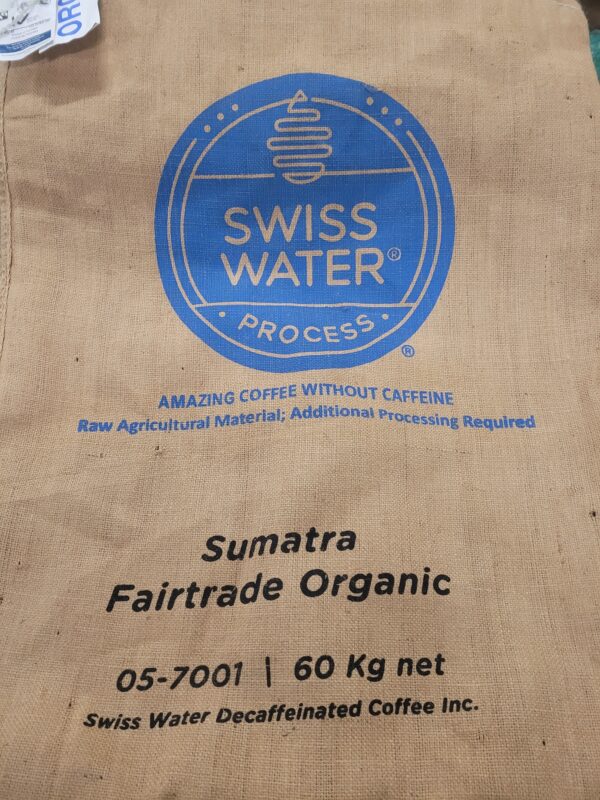

The best growing regions for the Arabica varieties are on the islands of Sumatra, Sulawesi, Java, Flores, and Bali. However 10 to 15% of the Coffees produced in Indonesia are Arabica beans.

Today Indonesia is still a major producer of Robusta Beans. Most new coffee plants came from Africa and were primarily Robusta Beans, because these were more root disease resistant. Coffee production expanded well during these early days however, in 1877, the coffee plantations were wiped out by a coffee root disease forcing the country to replant new coffee trees. The first coffee production sold was in 1712 in Amsterdam, The Netherlands. It is home to the first commercial coffee plantations in the world. Indonesia was introduced to coffee by the Dutch in the mid-seventeenth century.

The Swiss Water Process is a taste-driven, 100% Chemical FREE water decaffeination process.
This Sumatra is a Swiss Water Processed Decaf. Cup Characteristics: This Arabica Swiss Water Processed Decaf Sumatra Coffee features more crema and body, adding slight smokiness, rich hints of dark chocolate, earthy and nutty flavors with a hint of herbal notes. And yes, this also opens up more room for more limited time coffees. That also allows Starbucks to explore more roasting and blending options. Starbucks isn't moving away from beans at all, and by offering less coffee year round, you're going to be able to experience those coffees at their freshest and finest. In that same line of thinking, having less core coffee year round means less coffee expiring on the shelves. In terms of freshness, the goal is to have more single origin blends offered right after that region has harvested. On another note, coffee is actually an agricultural product. It's worth mentioning that Starbucks still continues to use African coffees in cold brew as well as in blonde espresso so they aren't going away anytime soon. That doesn't mean that they aren't supporting African coffees, in fact, the decision was made to care about the region. Starbucks has been relying on the seconds harvest to keep up with the demand, however, they don't want to over-stress the region and relying on that fly crop. Kenya, for example, harvests twice, with the fly (second) crop being much smaller. Most single origin coffees only harvest once a year. The only difference between the core coffee lineup and reserve coffee is the dependability on that high quality supply. The first thing I want to share with you is that Starbucks sources the highest quality beans.







 0 kommentar(er)
0 kommentar(er)
